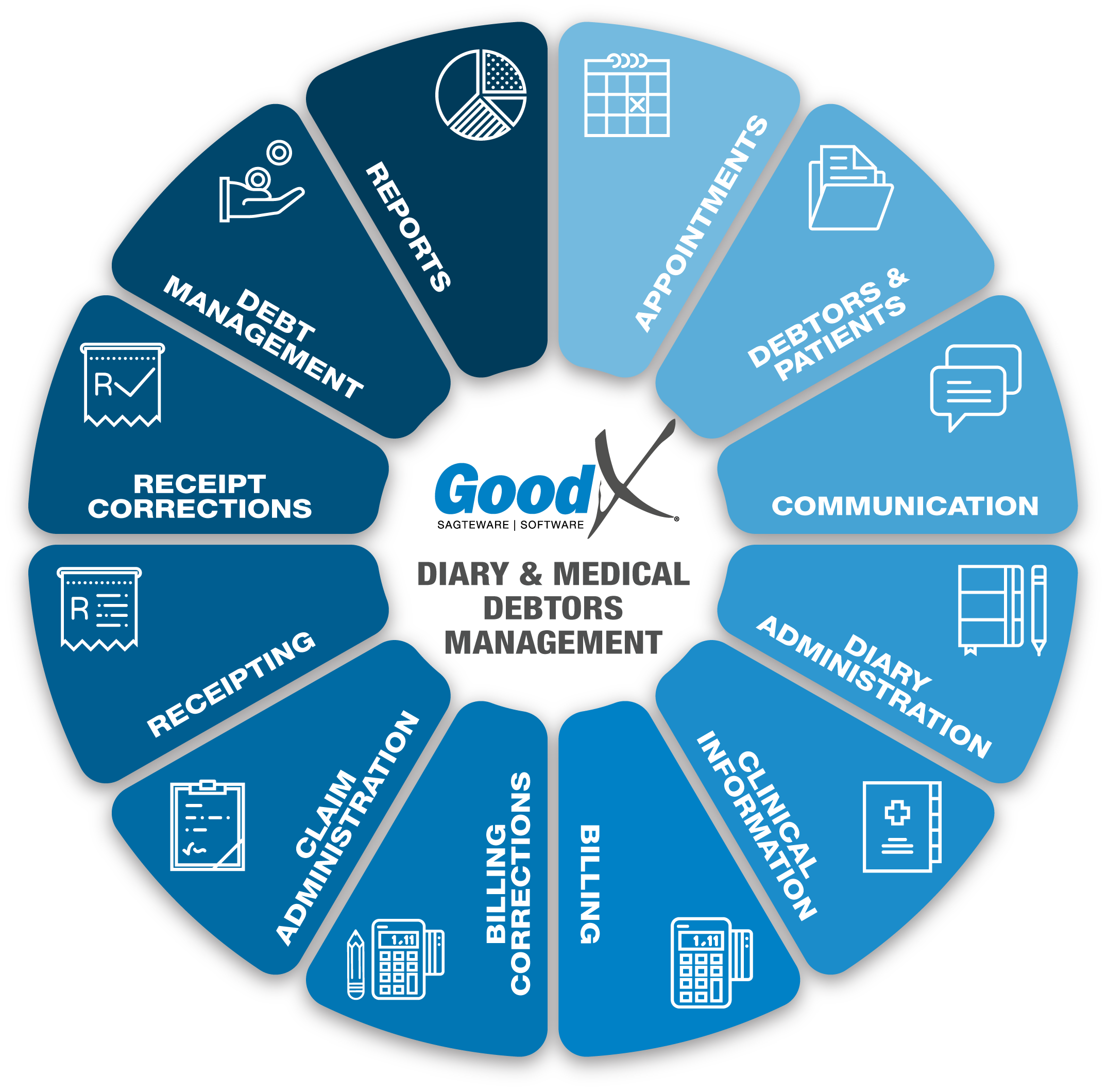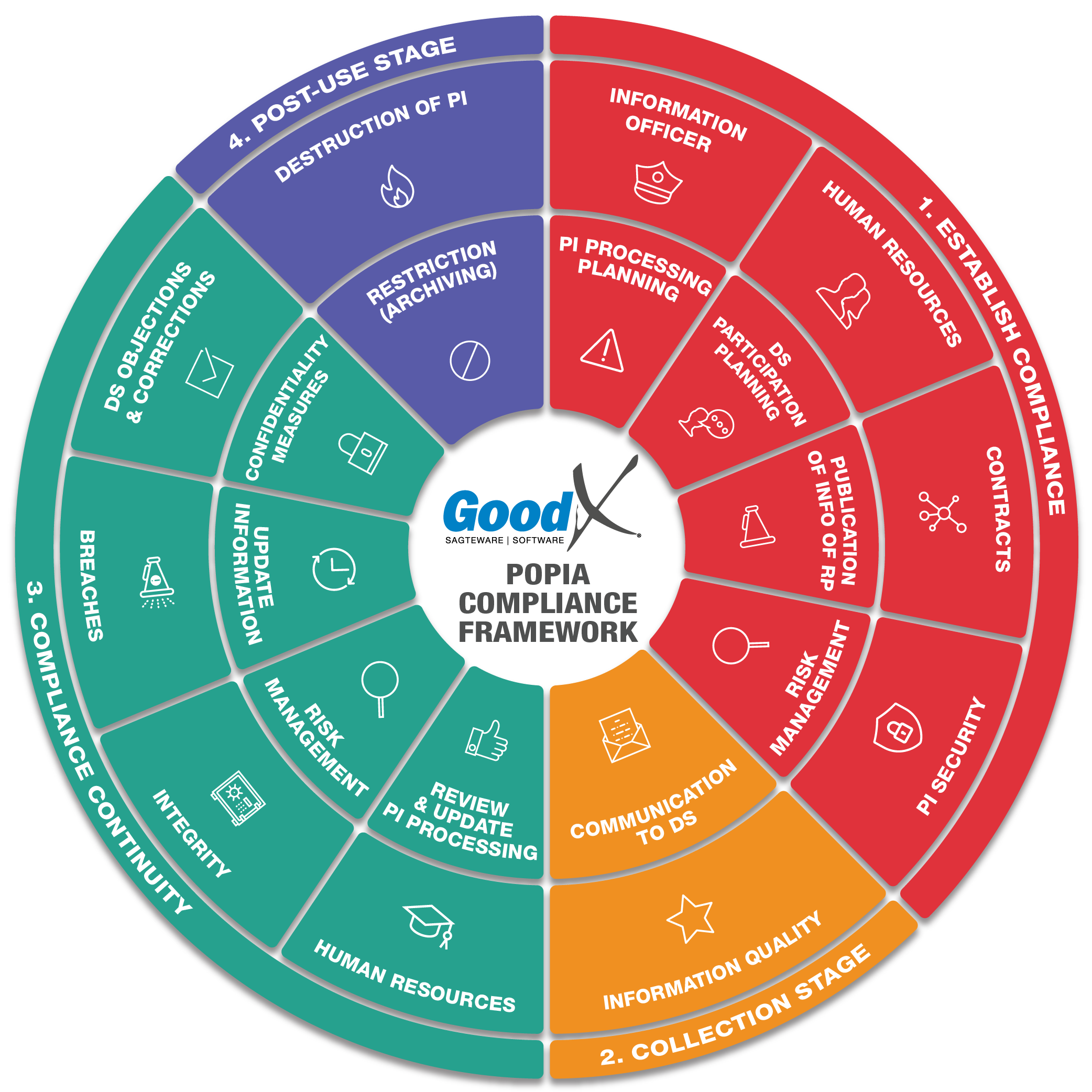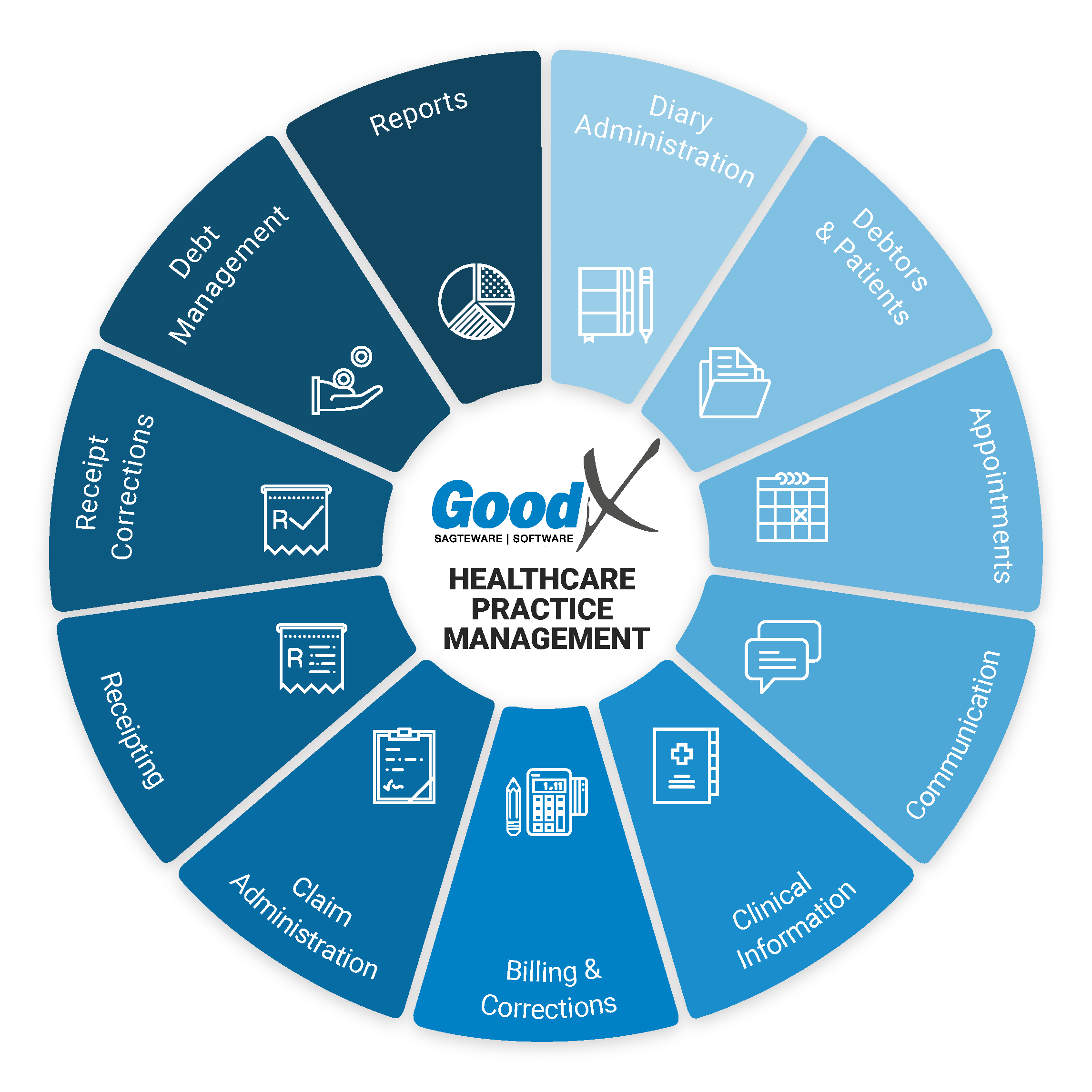Best Practice Guidelines: Healthcare Practice Management & POPIA Compliance Framework
Best Practice Guidelines: Healthcare Practice Management
&
POPIA Compliance Framework


Copyright © 2021 GoodX Software. All rights reserved.
GoodX online Learning Centre
learning.goodx.co.za
3. Introduction to Critical Business Processes
3.1. Summary of the Critical Business Processes

Diary Administration
Taking and maintaining control of the healthcare practice schedule has a more significant positive impact on resource utilisation, profitability and the general satisfaction of patients, practitioners, and employees than almost any other function. Using different types of appointments helps manage daily operations, such as patient appointments, lunchtimes and hospital rounds. In addition, managing the waiting room and the collection of vital information before consultations commence will save precious time.
Debtors and Patients
Correct information for medical debtors and their dependents must be captured and validated, so that claim processing and follow up will be successful. Using the benefit check functionality will ensure that there are funds available on the medical savings account. Alternatively, the practice can request deposits for upcoming healthcare services.
Appointments
All appointments should be captured on the electronic diary to enable the practice to draw various statistical reports, for example, ensuring that all patient visits have been billed. In addition, allowing patients to make online bookings lightens the workload of reception and puts control into the hands of patients.
Communication
Targeted and secure communication is of utmost importance for compliance and healthcare management. Electronic communication media integrated with the software, for example, SMS, email, VoIP and telehealth functions, will significantly increase the ability to communicate and consult with patients.
Clinical Information
The practitioner is legally the only person allowed to complete and access a patient's clinical information, making access control a must. Also, a well designed paperless clinical module should contain at least the following features to assist practitioners: General Examination Forms, Special Investigation Forms, the ability to capture vitals with result processing and warnings, graphs and summaries of clinical history, third-party clinical integrations, for example, radiology integrations, pathology orders and results, customisable questionnaires and forms and the ability to draw clinical reports.
Billing and billing corrections
Billing ensures that timely, accurate and complete accounts are submitted to medical aids or issued to private patients. Switching directly to medical aids enhances healthy cash flow in the practice. Treatment planning and providing estimates allow the practice to configure multi-visit treatment plans with associated billing and allow for billing as work gets completed.
Claim Administration
Cash flow is of vital importance to the practice. One way of optimising cash flow is to send claims through to medical aids before patients leave so that cashiers can collect outstanding balances before patients leave the practice.
Receipting and receipt corrections
There are three types of receipts, namely patient receipts (private payments), medical aid receipts (remittance advice to be captured by hand), and electronic remittance advices (ERAs) received electronically from medical aids and imported into the software. Thus, a patient's account can reflect both patient outstanding and medical aid outstanding balances. If no receipts are captured in the software, practices cannot manage outstanding debt.
Debt Management
Proper debt management will increase the cash flow of the practice, making the business financially viable. In addition, the issuing of payment links to patients support credit control by allowing patients to make secure, quick and easy payments.
Reports
The ability to draw daily, monthly, and yearly reports will give owners of practices the ability to manage their business properly. If all employees work diligently throughout the critical business processes, reports will show that the practice's finances are in good form. Reports can then be sent to auditors to finalise the financial year without any hassles.